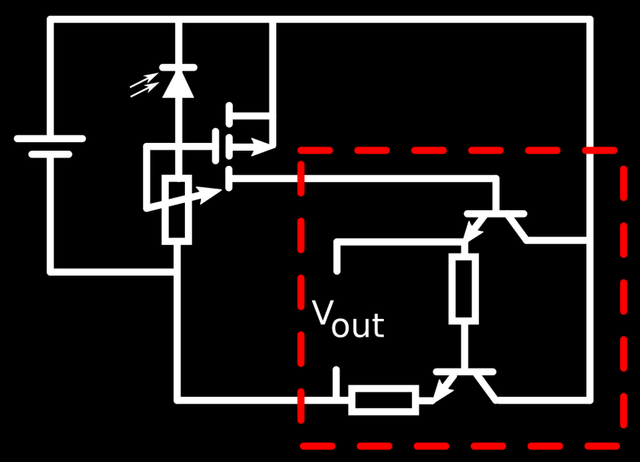Original creation date: 15th September 2017
Note: Originally I posted this on my Wordpress Blog (https://1337codersblog.wordpress.com), but I decided to switch to steemit, so I copied it from there.
Simple light barrier - Part 3
In the past month I reworked the circuit of the receiver part of the light barrier and successfully tested it in a circuit simulator:

The circuit consist of the photodiode, a simple adjustable threshold trigger and a booster stage. The threshold trigger consists of a potentiometer, which is used for adjusting the threshold current of the trigger and a p-Channel MOSFET triggering a signal when the current which flows through the photodiode is lower than the threshold value. In this case the MOSFET is in conducting mode and the current flowing through gate and source will be boosted to a maximum by the booster stage which is marked by the red border. In the booster stage the two resistors should have a high resistance, but the resistance should be low enough to bring the transistors in saturation mode. In my simulation a value of 100 Ohm by 12 Volt input voltage was a good resistance value. The higher the resistances and current amplification by the transistors are, the more you will get a On-Off-Behaviour on the output. The customer is connected on the two clamps of Vout and could, for example, be a MOSFET controlling the power supply of some device.